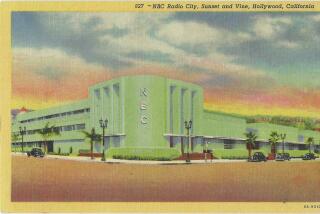RADIO : ‘The Beat’ Finds a Rainbow Urban Niche : KKBT’s ‘black music’ format has left the deejay booth, replaced by a mix that reflects its diverse market.
When Craig Wilbraham took the reins four years ago at KKBT-FM (92.3), Southern California’s leading urban-contemporary radio station, he inherited a quandary.
Stations with similar “black music” formats were thriving in other urban centers around the country, so why wasn’t KKBT, the station known as “The Beat”?
Surprisingly enough, he found the answer in the federal census: Los Angeles and Orange counties, the two largest areas served by KKBT, are only about 10% African American.
Even if KKBT continued to capture a large share of that audience, Wilbraham realized, the station wouldn’t be a legitimate contender in the competitive local ratings wars if it didn’t appeal to anybody else.
His solution: Change the station’s promotion strategy, which had been aimed solely at African Americans, so that it reached out to a wider demographic.
“In this market, we had to be more than just an urban radio station,” says Wilbraham, KKBT’s vice president and general manager. “We had to program the station in a general-market way and not be so Afrocentric that we targeted only that segment of the population.”
During the next two years, Wilbraham brought in a virtual rainbow coalition of deejays, giving the station a lineup that includes African Americans, Latinos, whites and a Japanese American.
This approach has paid off handsomely for KKBT, which jumped from No. 14 in the quarterly Arbitron ratings of summer 1993 to No. 4 last fall.
“They know their audience,” says a rival and admirer, program director Cliff Winston of KJLH-FM (102.3). “They strategized and found the niche where they could have the most growth.”
Where urban-contemporary stations in cities with larger African American bases typically attract audiences that are 70% African American, KKBT’s audience is 42% African American, 31% Latino and 27% “other.”
“We understood that this genre of music had appeal across several cultures and ethnicities,” Wilbraham says.
In addition to its multiethnic deejay lineup, the transformation of KKBT into a rising ratings power involved several other key elements:
* Rather than researching the listening tastes of only African Americans, KKBT began including other ethnic groups in its surveys.
“At the risk of sounding a little cocky, we have a majority of the black listeners pretty much locked in,” Program Director Harold Austin says. “We had to get some other points of view.”
The appeal of artists such as Anita Baker and Luther Vandross, KKBT’s research showed, was limited mainly to African Americans, so their records were played less frequently under the new approach. Meanwhile, records by mass-appeal artists such as Whitney Houston, Mariah Carey and Boyz II Men were played more often. And more hip-hop was added to the mix, capitalizing on the wider appeal of Ice Cube and Snoop Doggy Dogg, among others.
“Three years ago, the station was a little sleepy--and more adult,” Austin says. “Now,we’re a lot hipper and more cutting-edge.”
* While continuing to target its core audience in most promotions, KKBT involves itself more in events that don’t concern only African Americans.
“Things like sponsoring car shows and the AIDS Dance-a-Thon expose our station to other groups,” Wilbraham says. “Hopefully, they’ll like it--and the ratings seem to indicate that a lot of people do like it and feel comfortable here. As a result, we’re not just pigeonholed as the black radio station.”
* Two years ago, KKBT introduced its “No Color Lines” marketing campaign, which promotes cultural diversity and encourages “unity through music.”
“It’s part of what attracts our listeners,” says Dominique DiPrima, director of KKBT’s community action department and host of the station’s issue-oriented “Street Science” program. “They want to be down with something positive. A lot of people are reaching out, trying to bridge the gaps.”
But it’s the deejay lineup that may be the most dramatic of KKBT’s steps. Theo Mizuhara, a third-generation Japanese American from San Francisco, has developed into one of the station’s most popular on-air personalities, his distinctive basso voice reminding listeners of Barry White.
Though not everybody, of course, has bought into the program--”Some doubt that a white-owned company is sincere in what we’re doing in promoting cultural diversity,” Wilbraham says--the ratings indicate that KKBT has made a strong connection with an expanding audience.
“At the end of the day, this is a business, and the parent company [Evergreen Media] expects us to be profitable,” Wilbraham says. “But we’re also trying to have a positive impact on our listeners.”
More to Read
The biggest entertainment stories
Get our big stories about Hollywood, film, television, music, arts, culture and more right in your inbox as soon as they publish.
You may occasionally receive promotional content from the Los Angeles Times.










